
Psychedelic rock is a rock music genre that is inspired, influenced, or representative of psychedelic culture, which is centered on perception-altering hallucinogenic drugs. The music incorporated new electronic sound effects and recording techniques, extended instrumental solos, and improvisation. Many psychedelic groups differ in style, and the label is often applied spuriously.
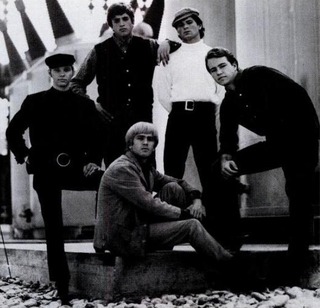
The Electric Prunes are an American psychedelic rock band, formed in Los Angeles, California, in 1965. Much of the band's music was, as music historian Richie Unterberger described it, possessed of "an eerie and sometimes anguished ambiance." Their most successful material was by songwriters Annette Tucker and Nancie Mantz, though the group also penned their own songs. Incorporating psychedelia and elements of embryonic electronic rock, the band's sound was marked by innovative recording techniques with fuzz-toned guitars and oscillating sound effects. In addition, guitarist Ken Williams' and singer James Lowe's concept of "free-form garage music" provided the band with a richer sonic palette and exploratory lyrical structure than many of their contemporaries.

Country Joe and the Fish was an American psychedelic rock band formed in Berkeley, California, in 1965. The band was among the influential groups in the San Francisco music scene during the mid- to late 1960s. Much of the band's music was written by founding members Country Joe McDonald and Barry "The Fish" Melton, with lyrics pointedly addressing issues of importance to the counterculture, such as anti-war protests, free love, and recreational drug use. Through a combination of psychedelia and electronic music, the band's sound was marked by innovative guitar melodies and distorted organ-driven instrumentals which were significant to the development of acid rock.

Jazz fusion is a music genre that developed in the late 1960s when musicians combined jazz harmony and improvisation with rock music, funk, and rhythm and blues. Electric guitars, amplifiers, and keyboards that were popular in rock and roll started to be used by jazz musicians, particularly those who had grown up listening to rock and roll.

The Shadows of Knight were an American rock band from Chicago, Illinois, that played a version of British blues influenced by their native city. When they began recording in 1965, the band's self-description was "the Stones, Animals and the Yardbirds took the Chicago blues and gave it an English interpretation. We've taken the English version of the Blues and re-added a Chicago touch," to which rock critic Richie Unterberger commented: "The Shadows of Knight's self-description was fairly accurate."
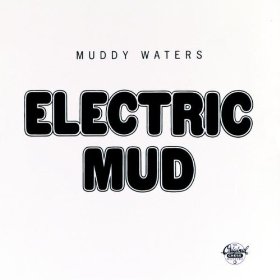
Electric Mud is the fifth studio album by Muddy Waters, with members of Rotary Connection playing as his backing band. Released in 1968, it imagines Muddy Waters as a psychedelic musician. Producer Marshall Chess suggested that Muddy Waters record it in an attempt to appeal to a rock audience.
Psychedelic folk is a loosely defined form of psychedelia that originated in the 1960s. It retains the largely acoustic instrumentation of folk, but adds musical elements common to psychedelic music.

Aynsley Thomas Dunbar is an English drummer. He has worked with John Mayall, Frank Zappa, Jeff Beck, Journey, Jefferson Starship, Nils Lofgren, Eric Burdon, Shuggie Otis, Ian Hunter, Lou Reed, David Bowie, Mick Ronson, Whitesnake, Pat Travers, Sammy Hagar, Michael Schenker, UFO, Michael Chapman, Jake E. Lee, Leslie West, Kathi McDonald, Keith Emerson, Mike Onesko, Herbie Mann and Flo & Eddie. Dunbar was inducted into the Rock and Roll Hall of Fame as a member of Journey in 2017.
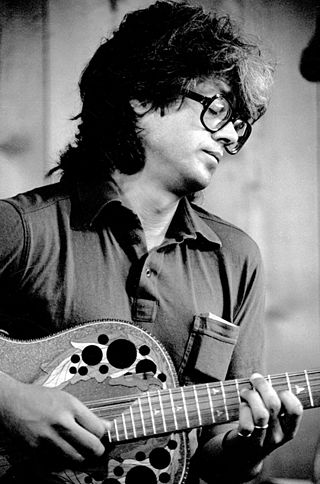
Larry Coryell was an American jazz guitarist.

Jim Gilbert Pepper II was a jazz saxophonist, composer and singer of Kaw and Muscogee Creek Native American heritage. He moved to New York City in 1964, where he came to prominence in the late 1960s as a member of The Free Spirits, an early jazz-rock fusion group that also featured Larry Coryell and Bob Moses. Pepper went on to have a lengthy career in jazz, recording almost a dozen albums as a bandleader and many more as featured soloist. Pepper and Joe Lovano played tenor sax alongside each other in a band led by drummer Paul Motian, recording three LPs in 1984, 1985 and 1987. Motian described Pepper's playing as "post-Coltrane". Don Cherry was among those who encouraged Pepper to bring more of his Native culture into his music, and the two collaborated extensively. Pepper died of lymphoma aged 50.

John Laird Abercrombie was an American jazz guitarist. His work explored jazz fusion, free jazz, and avant-garde jazz. Abercrombie studied at Berklee College of Music in Boston, Massachusetts. He was known for his understated style and his work with organ trios.
Psychedelic music is a wide range of popular music styles and genres influenced by 1960s psychedelia, a subculture of people who used psychedelic drugs such as 5-MeO-DMT, DMT, LSD, mescaline, and psilocybin mushrooms, to experience synesthesia and altered states of consciousness. Psychedelic music may also aim to enhance the experience of using these drugs and has been found to have a significant influence on psychedelic therapy.

Bob Moses is an American jazz drummer.

Fresh Maggots are a folk duo from Nuneaton, Warwickshire in England, consisting of Mick Burgoyne and Leigh Dolphin, who played a variety of instruments including guitars, glockenspiel, tin whistles and strings. They released two albums in 1971 and 2020, but sustained interest in the 1970 album saw it re-released in several times.
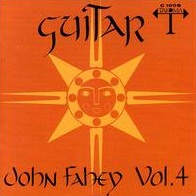
The Great San Bernardino Birthday Party & Other Excursions is an album by American fingerstyle guitarist and composer John Fahey, released in 1966. The cover simply labels the album Guitar Vol. 4 while the liner notes label it The Great San Bernardino Birthday Party & Other Excursions. The title never appeared on the record labels themselves. It marked the beginning of Fahey's interest in his recording of experimental soundscapes and sound effects. Despite Fahey's distaste for the 1960s counterculture, it is his release most often referred to as psychedelic.
The Mystic Tide were an American rock band who have been credited for creating some of the first psychedelic anthems. Despite their lack of commercial success, they are now highly regarded amongst followers of garage rock and are recognized for their innovative musical approach.

The Free Spirits was an American band credited as the first jazz-rock group. The band also incorporated elements of pop and garage rock. Their first album Out of Sight and Sound was recorded in 1966 and released in 1967.

Spaces is an album by jazz guitarist Larry Coryell that was released in 1970 by Vanguard Records. Coryell is accompanied by John McLaughlin on guitar, Chick Corea on electric piano, Miroslav Vitouš on bass, and Billy Cobham on drums. The album was produced by Daniel Weiss and engineered by David Baker and Paul Berkowitz.
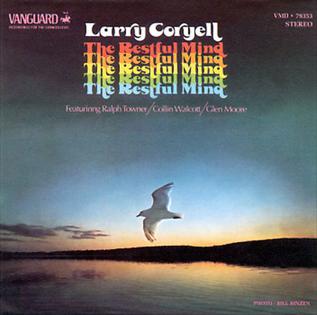
The Restful Mind is an album by jazz guitarist Larry Coryell. It was recorded at Vanguard Records' New York City studio, and was released by Vanguard in 1975. It features Coryell on acoustic and electric guitars, along with three of the four members of the band Oregon, who were also recording for Vanguard at the time: Ralph Towner appears on guitar, Glen Moore on bass, and Collin Walcott on percussion. The album includes improvisations on two compositions by the French Baroque composer Robert de Visée, an adaptation of Maurice Ravel's "Pavane pour une infante défunte", and four Coryell originals.
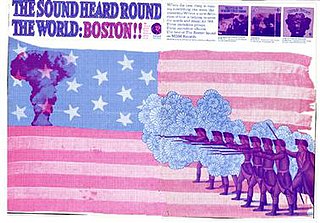
The Bosstown Sound was the catchphrase of a marketing campaign to promote psychedelic rock and psychedelic pop bands in Boston, Massachusetts, in the late 1960s. The concept was conceived by the record producer Alan Lorber as a marketing strategy intended to establish several underground musical artists native to the city on the national charts and compete with the popular San Francisco Sound. Lorber chose Boston for his plan because of the several bands developing in the city, the abundance of music venues, and the proximity of MGM Records, which had signed the core groups.

















